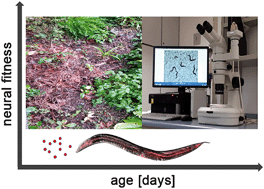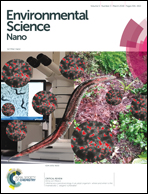Lifetime eco-nanotoxicology in an adult organism: where and when is the invertebrate C. elegans vulnerable?
Abstract
This review addresses nanotoxicology in the nematode roundworm Caenorhabditis elegans. Special emphasis is on the natural habitats of wild C. elegans in correlation with modeled environmental sinks of engineered nanomaterials. Respective hypotheses about a first encounter are outlined and identify the worm as a relevant target organism of nanoparticles. In the laboratory C. elegans represents a genetically and experimentally amenable animal model that leads a boom life cycle consisting of several larval stages followed by an adult life span of only 2–3 weeks. The latter enables long-term observation of nanoparticle effects in young, middle-aged and old worms. A picture emerges that certain nanomaterials induce premature aging processes, thereby reducing the health span and longevity of C. elegans. The neural system of the worm turns out as a prominent target organ showing neuromuscular defects that among others manifest in neurodegeneration of single neurons in combination with altered locomotion, reduced fecundity and impaired olfaction. Notably, specific vulnerabilities occur at distinct ages of adult C. elegans. Conceivable consequences of neural defects for wild C. elegans are discussed, as are system biology-based strategies to identify common pathways of nanoparticle–bio-interactions from worm to men.

- This article is part of the themed collection: ICEENN


 Please wait while we load your content...
Please wait while we load your content...